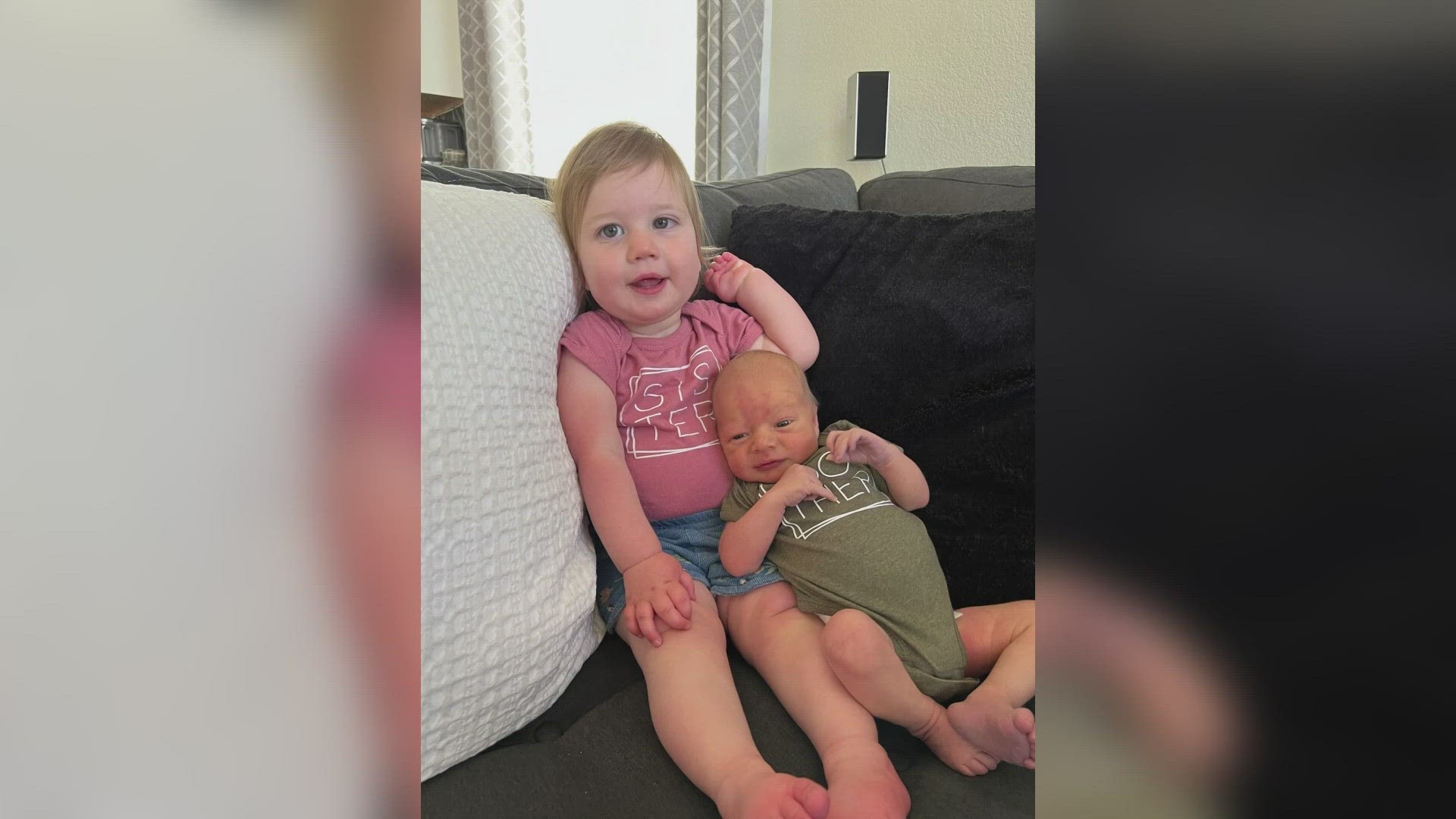LAKEWOOD, Colo. — A Lakewood family is in Texas, as their son recovers from a surgery they hope changes his life.
The parents said both of their kids were diagnosed with SPG50, which is an ultra-rare genetic disease that affects cognitive and motor function. They hoped this surgery allows their family to do everything they have always wanted to do together.
The Lockards love every minute of family time they can get. “Naomi, she is our two-year-old daughter,” Rebekah Lockard said.
Rebekah and her husband noticed early on, their daughter wasn’t hitting milestones they expected.
“At six months, she still wasn’t doing anything you’d expect a six-month-old to do,” Lockard said. “By her first birthday, she wasn’t even able to sit up on her own. We were kind of blown off by our pediatricians they, you know, thought we were just normal, nervous first-time parents.”
Then, they made Naomi an appointment at Children’s Hospital Colorado. All Naomi’s tests came back normal, until the genetic test.
“It was positive for this condition it’s called SPG50,” Lockard said. SPG50 is an ultra-rare neurodevelopmental and neurodegenerative disease,” said Dr. Sarah Guistolisi, with Children’s.
Guistolisi said as of November 2023, there were about 50 confirmed SPG50 cases around the world.
“SPG50 affects both cognitive development and motor development and very, very early on,” Guistolisi said. “Usually what this looks like is early on in the disease, so the first months to years of life, children will have low tone, which means children will have difficulty meeting their milestones because their tone is very low, or their tone is very weak. So they have difficulty with things like sitting and crawling in those early milestones.”
Guistolisi said as children get into their early childhood, that low tone switches to high tone, or spasticity.
“Their muscles get really tight and unfortunately, often times when that switch occurs, it makes it very difficult for them to maintain the progress and milestones they had achieved, because now their muscles are really tight,” Guistolisi said. “So if they had achieved the ability to walk, it can make walking very difficult because their muscles have become very tight, where as they were very loose or low tone before.”
Guistolisi said this disorder progresses very slowly.
“The motor changes we see are over the course of many years, but unfortunately it also has the cognitive piece, so it makes it more difficult for these kiddos to also meet their more cognitive milestones such as speech production and being in the typical classes with their peers,” Guistolisi said.
“Naomi, she’s two, and she can’t walk yet she can’t even crawl …it makes her kind of floppy, like a toy baby doll almost,” Rebekah said.
Rebekah received her daughter’s diagnosis while she was eight-months pregnant with her son, Jack.
“We were told there was a 25% chance Jack would get the diagnosis as well,” Rebekah said. “Well and that was about four weeks before he was born, so for four weeks we waited, just agonizing.”
Doctors tested Jack when he was born. “It’s very hopeless and overwhelming,” Rebekah said.
Their second baby was also positive for the incurable disease. “I don’t know, I felt horrible,” Rebekah said. We just started sobbing, both of us, it's devastating.”
“The fact that Naomi and Jack’s parents both had a variant in the exact same gene that could go on to cause a disease was extraordinarily rare, I’d say we are looking at one in a million,” Guistolisi said.
There is no cure right now for SPG50. “We wanted to teach our kids to ski, and to you know go camping, and run around a campfire, and all of those things seem very, very out of reach,” Rebekah said.
To bring those hopes back in reach, the Lockards turned to gene therapy in Texas. Six-month-old Jack is still recovering from the surgery.
“This is the best shot we have for them to have a nice life, and hopefully be healthy for the next however many years,” Rebekah said.
“If anything’s going to work, it’s going to be a therapy like this,” Guistolisi said. “What we are hoping to do with the clinical trials that are going on is actually using a virus. We hijack that viral machinery and put in a corrected gene, and the hope is that when we use this virus to package this gene then put it actually to the spinal fluid of the children that it would go into the cells of the body and replace the gene that has the variant that causes disease.”
When dealing with ultra-rare diseases, Guistolisi pulls from similar cases to break it down for families.
“What we are able to do is pull from similar cases, even if it’s not the same disease, not the same genetic change we would see in a different disease, a lot of the presentations are fairly similar,” Guistolisi said. “It’s constantly a learning process because often times when we are diagnosing these diseases that there are only a handful of children that have ever been identified worldwide. It’s pretty likely you have never taken care of one of these kids with one of these ultra-rare diseases.”
“You have to look at the small things, that we get time with our kids, they are happy,” Rebekah said. “No matter what, we want to give them the best life possible.”
SUGGESTED VIDEOS: Latest from 9NEWS

